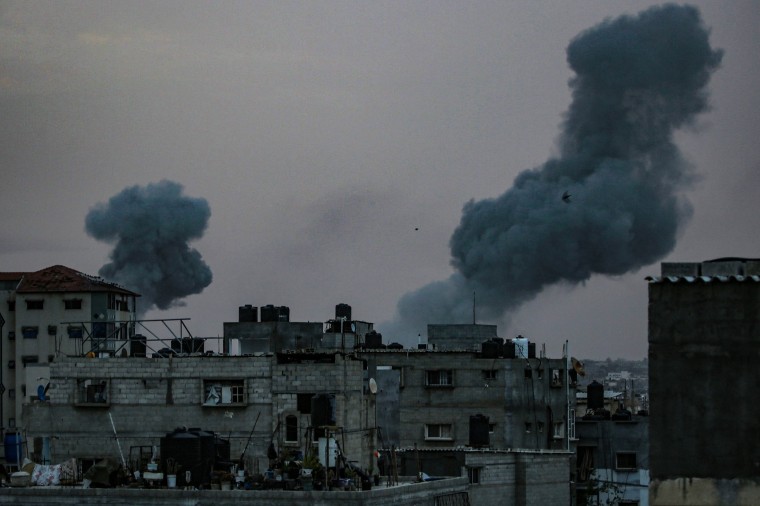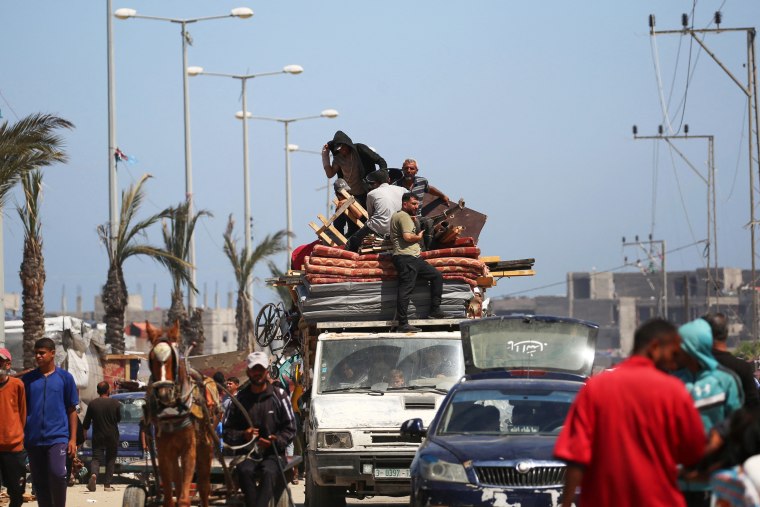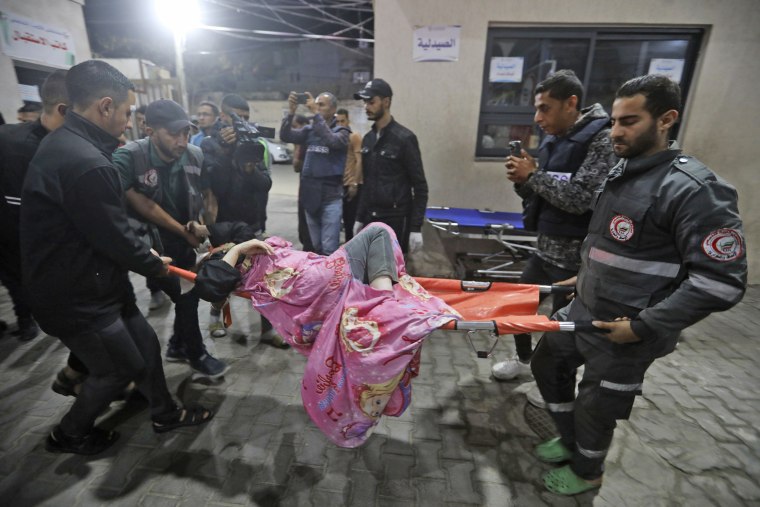CAIRO — As battles raged across Gaza where the health ministry said the death toll since Oct. 7 had topped 35,000 Sunday, there was widespread panic in the enclave’s southernmost city of Rafah as tens of thousands people upped sticks and left fearing an imminent Israeli invasion.
In parts of the north that the Israel Defense Forces (IDF) said it had cleared months ago, Palestinians reported heavy fighting Sunday after Israeli bombardment overnight. Elsewhere, the IDF said Sunday that dozens of militants had been killed in Rafah where more than 1 million Palestinians, many displaced from elsewhere, had been seeking shelter.
Hamas’ military wing, the Al-Qassam Brigades, said on Telegram Sunday that there had been “fierce fighting” to the east of the Jabalia refugee camp, near Gaza City in the north of the strip, suggesting the militant group has regrouped in the area once claimed by Israel.
It came after heavy Israeli bombardment was reported there overnight by several Palestinian officials including lawmaker Mustafa Barghouti.
The IDF called on the civilian population to evacuate the camp in a post on Telegram Saturday. It said Hamas has attempted to “reassemble its terrorist infrastructure and operatives in the area.”
The fighting in the north — which has been largely isolated for months, prompting the United Nations to warn of famine in the region — came after the IDF issued an “urgent warning” to civilians on Saturday to evacuate parts of Rafah.
The IDF, whose troops have been battling militants in Rafah since the army seized the nearby border crossing with Egypt last week, published a map Saturday showing that sectors of the city were now considered a “dangerous combat zone” and warned civilians that it would “act with extreme force against terrorist organizations in your area of residence.”

Israel has already sent some tanks into Rafah, and has said for months that it will launch a full-scale ground assault on the city. Prime Minister Benjamin Netanyahu and other members of his government have insisted it is necessary to ensure the destruction of Hamas following the Oct. 7 attacks on Israel that saw some 1,200 people killed and around 240 taken hostage.
Gaza’s health ministry said Sunday more than 35,000 people had been killed since Oct. 7, most of them women and children.
Were Israel to invade, it would defy pressure from the U.S. and others that have warned that such an attack threatened devastating consequences for the Palestinians who have fled there from the rest of the enclave.
The U.N. said Sunday that an estimated 300,000 Palestinians have been forced to flee the city in a week.
Citing the same number, the IDF said in Saturday’s Telegram post that many had gone to Muwasi, a nearby coastal area where Israel has promised an “expanded humanitarian area” would await them.
However the concept of “safe zones” has been widely questioned. An NBC News investigation found last month that Palestinians were killed in areas of southern Gaza that the Israeli military had explicitly designated as such.

And Philippe Lazzarini, the commissioner-general of the United Nations Relief and Works Agency, known as UNRWA, said in a post on X Saturday that “the claim of ‘safe zones’ is false and misleading.”
His comments came after the U.N. on Thursday said Muwasi, where the Israeli military has instructed evacuees to go, “is already without sufficient food, water, medicine, hygiene products, electricity, shelter and access to education for children; it cannot cope with a population influx.”
Inside Rafah, Ammar Ghanem, a doctor with the Palestinian American Medical Society, told an NBC News camera crew Saturday that doctors and nurses were having to abandon their patients to evacuate their families.
“Two days ago, we had to have four local physicians covering the three hospitals. None of them were able to show up,” he said. “They took the whole day to transport them and they came the second day.”
“We have half of the nurses on average not showing up for the same reason,” he added.

Adding to the confusion, the largest telecommunications provider in the region, Paltel, said in a statement Sunday that “fixed internet services have been cut off in the southern regions of the Gaza Strip.”
Facing rising anger domestically, President Joe Biden has become increasingly critical of Israel’s conduct in the war. Senior administration officials previously told NBC News that the U.S. halted a large shipment of weapons to Israel last week over fears that they would be used to invade Rafah. And Biden said later that the U.S. would not provide Israel with certain weapons and artillery shells if it launched a ground offensive on the city.
On Friday, the Biden administration said it was “reasonable to assess” that Israel has violated international law in Gaza using weapons provided by the United States, but that it hasn’t violated terms of U.S. weapons agreements.
Along with representatives from Qatar and Egypt, American officials, including CIA Director William Burns, have been leading attempts to broker a cease-fire in the conflict.
But the latest efforts looked dashed after Israeli and Hamas mediators left Cairo last week having failed to reach a deal. Hamas — a banned terrorist group in most of the West — said negotiations were back to square one.
Hala Gorani reported from Cairo and Mithil Aggarwal from London.






